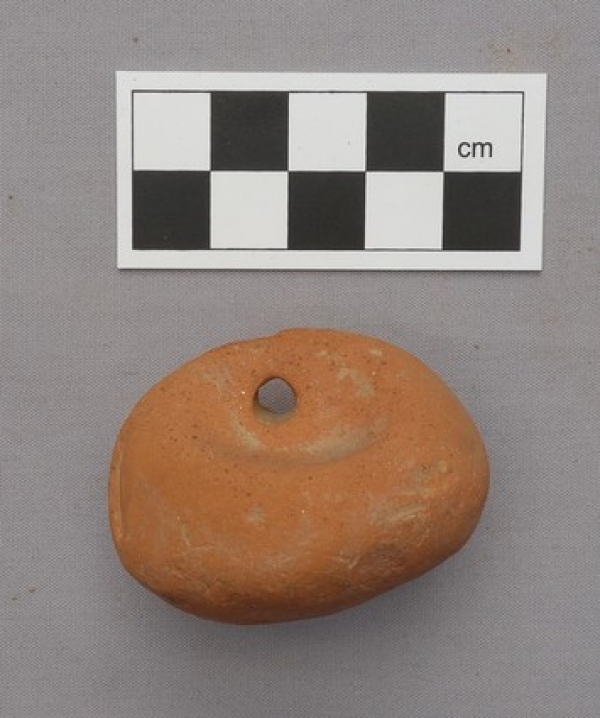Images on vases and many ancient literary references point to wool working and weaving as the work of women and girls in ancient Greece. But male weavers were not unknown (some two hundred man's names appear in Linear B tablets about weaving at Knossos); two male weavers, Helicon and Acesas, are recorded as making a sail that was presented to the goddess Athena on the Acropolis (von Hofsten 2011:18). It is possible that the weaving of specialized textiles, such as sails, was done by craftsmen. Yet weaving as a whole was seen as the women’s domain. In the Iliad, Hector explicitly tells the royal Andromache to “go to the house and busy yourself with your own tasks, the loom and the distaff, and tell your handmaids to ply their work: and war will be the concern for men…” (Book VI 490-493, Loeb translation).
Andromache is indeed described earlier as “… weaving a tapestry in the innermost part of the lofty house, a purple tapestry of double fold [in double weave], and in it she was weaving flowers of varied hue.” (Book XXII 440-441. Brackets by Susan T. Edmunds). Helen herself is also “…weaving a great purple web of double fold (in double weave])on which she was embroidering (in which she was portraying])many battles of the horse-taming Trojans and the bronze-clad Achaeans...” (Book III 121-128, with Edmunds' corrections in brackets).
Passages such as these throw light on ancient gender roles and relations. The historian Herodotus (484-425 BCE) was shocked (and doubtless shocked his Greek readers) when he wrote that in Egypt men were the weavers—and that they wove from the bottom up, not from the top down (as on a warp-weighted loom): “Not only is the Egyptian climate peculiar to their country…but the Egyptians themselves in their manners and customs seem to have reversed the ordinary practices of mankind.”
“For instance, women attend market and are employed in trade, while men stay at home and do the weaving. In weaving the normal way is to work the threads of the weft upwards, but the Egyptians work them downwards.” (Herodotus, The Histories, Book 2, chapter 35).
In his book Economics (Books 7 and 8), the historian/soldier Xenophon (died c. 354 BCE) has his character Isomakhos explain the running of the ideal household to his young wife. The ideal wife is likened to a queen bee. She is to teach slave women how to weave by standing in front of the loom herself. Likewise she must teach the women how to spin.

